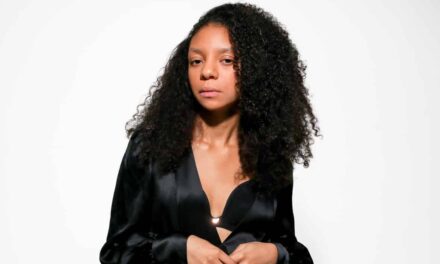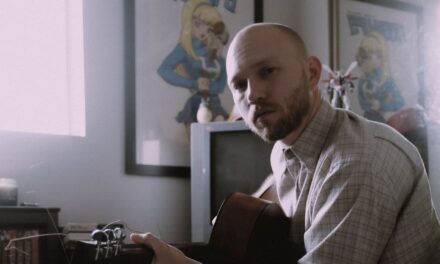Out today via Flower Moon Records, “Old Gaia” is the first official collaboration between indie hip-hop poet Rig 1 (Ian McElroy) and spiritual music artist BrightA (Brad Greenberg). The single is a lush, reverent ode to the Earth—an offering in the form of sound that blends genre-defying production, conscious lyricism, and a deep sense of awe for the living world.
Described by the duo as “a love song to the Mother,” Old Gaia captures the miracle of simply being alive in this moment. “Supreme respect to her magnitude, greatness and wild beauty,” they write, setting the tone for a track that’s both celebratory and sacred. The single is produced by Rig 1, BrightA, and Mike Bloom (Jenny Lewis, Julian Casablancas, Richard Edwards), and released with support from Subtle Mother, the artist management and music supervision company founded by Marcy Bulkeley.
While the song is new, the collaboration has been years in the making. Rig 1 and BrightA first met over eight years ago in a ceremonial plant medicine setting—an experience that formed the root system of their friendship and creative bond. With musical backgrounds worlds apart—BrightA as a Berklee-trained jazz/funk drummer and medicine song artist, and Rig 1 as an indie-rap wordsmith and former Desaparecidos member—the two found common ground in shared spiritual practices and a deep respect for intentional music-making.
Rig 1 brings his trademark lyrical density to the track, merging beat-generation-inspired wordplay with existential introspection. BrightA weaves his own sound around it, channeling the organic textures and rhythmic pulses of nature itself. The result is a meditative yet magnetic piece that transcends genre—a song as suited for headphones as it is for healing spaces.
“Old Gaia” follows Rig 1’s 2023 full-length album Separation Illusion and BrightA’s 2024 debut con reverencia. The single also builds on Rig 1’s earlier works North of Maple and Above the Treeline, West of the Periodic—releases that have helped define his fusion of rap, spoken word, and ambient storytelling.
In a time when the world often feels disjointed and disconnected, Old Gaia offers a moment of unity. It’s a reminder—wrapped in rhythm and reverence—that there is still magic in presence, still healing in music, and still power in honoring the Earth that holds us all.
Old Gaia” has such a deep, reverent tone—what inspired you both to create a love song to the Earth, and why now?
In gratitude, the song was written due to the completely humbling, sometimes overwhelming immensity, the absolute miracle and opportunity to be alive.
If anyone in any way can put more love out in the universe, it is a good deal. We all have the choice (if we see it as a choice) to act in kindness and beauty however big or small, audible or inaudible, visible or invisible. Doing our best as it’s a process, not for perfection, return or outcome. As she, Old Gaia does.
You met in a plant medicine ceremony over eight years ago—how did that shared experience shape your musical and spiritual collaboration?
Meeting within the sacred container of plant medicine planted a seed far deeper than words could reach. These ancient technologies rewire not just the mind, but the way spirit moves through all relationships—self, other, sound, silence. That first shared ceremony was the opening note in a song that continues to unfold between us.
Over the years, that bond has become an expanding bridge—silent, strong, always growing. It’s given us the courage to be vulnerable with one another, to travel into the shadowed and luminous places without needing to explain. The conversation never really ends—it just deepens. And in that depth, our collaboration finds its voice: one that listens inward, reaches outward, and always circles back to the Earth.
The phrase “a transmission” is used to describe the song—can you talk about what that means to you in terms of songwriting and intention? Please expound Greenz:
It’s difficult to describe the creative process – transmission seems like an appropriate word because often times melodies/grooves/lyrical motifs seem to come from out of the ether, as if the ideas are just visiting for a short while. We do our best to capture those moments and do the spark justice. In a lot of ways it came through us and we guided it. But it was never “ours.”
You both come from very different musical backgrounds—how do jazz, funk, indie rock, and hip-hop merge on this track without overpowering each other?
We are highly receptive to each other. We both fully respect one another as sovereign individuals and artists. Most often we will use our differences as motivation to make the song the tastiest it can be. We both have interdependent roles and support if someone has a need to expound on a certain flavor or thing. Our differences support a greater effort/end point, in a completely non-oppositional way. Ultimately we do our best to let the vibrations guide the process and stay out of our own way.
Mike Bloom has worked with major artists like Jenny Lewis and Julian Casablancas. What was it like to collaborate with him on this single?
Effortless. He has great ideas and we trust, and we were wow-ed by what he brought to the track. He has great patience and was open to our many alterations down to the most minute details. We all prioritize the song over anything else. He was integral in it coming to life.
Rig1, your lyrics often explore existential themes. How do those themes show up in “Old Gaia,” and did your approach to writing shift in this collaboration?
In writing for Old Gaia, I found myself letting go of complexity and reaching for something more elemental. The collaboration with BrightA opened new mirrors —his way of listening, his vision, offered me angles I might not have discovered alone. It’s a gift, to write for someone you create with, not just alongside. There was this quiet whisper inside: make it hot for him, too. That kind of sharing changed the current. Doing it for him in that way gave me juice from batteries inaccessible before.
BrightA, your work is rooted in medicine and music—how do you approach blending that sacred sound with a more contemporary or genre blurring project like this?
“Medicine music” has always resonated so deeply with me because it’s made with the intention to heal—to help people move and transmute energy, shift emotions, and come back into harmony with themselves. That’s a sacred offering, and I hold it with a lot of respect.
When I came back to music after a long pause, I promised myself I’d only create from a place of truth and integrity—nothing performative, nothing forced. Collaborating with Rig1 on “Old Gaia” came from that exact space: pure joy, curiosity, and a shared reverence for sound as a vehicle for something bigger than us. Even though this project blends different genres and steps outside traditional “medicine music” frameworks, it still carries that same heart-centered intention. And for me, that’s what makes it medicine.
Can you describe a moment in the studio—or during the writing process —when you knew “Old Gaia” was something special?
When I first heard BrightA’s bridge hook I knew something was clicking differently. He was wicked with his drop, own spin and added a dimension on its own but also heavily informing the messaging globally on the track. When I heard that first Old Gaia I was like you have to throw it on the chorus too and he had the exact same thought (most likely before me).
What role does nature, or the concept of the divine feminine, play in your overall creative process—not just for this song, but as artists?
We take our cues from the trees— How do they do power? Quiet teachers of generosity, of being. The trees transform light into sustenance, root into one another, and speak through stillness. This is the rhythm we listen for.
Nature is not a concept for us—it’s the source code. She shapes the process. Recordings are micro-environments unto themselves. Gaia asks for surrender and deep listening, rather than control. The process itself requires receptivity, like your girl, the Mother. Which on the most grand scheme is what nature is and does for life, planet wide.
What do you hope listeners feel or take away after hearing “Old Gaia” for the first time?
Eye beholder’s beauty. We aimed to express the miraculousness and splendor of her wild and natural love in truth sonically. May it swim in as many consciousness’s as it is able.





